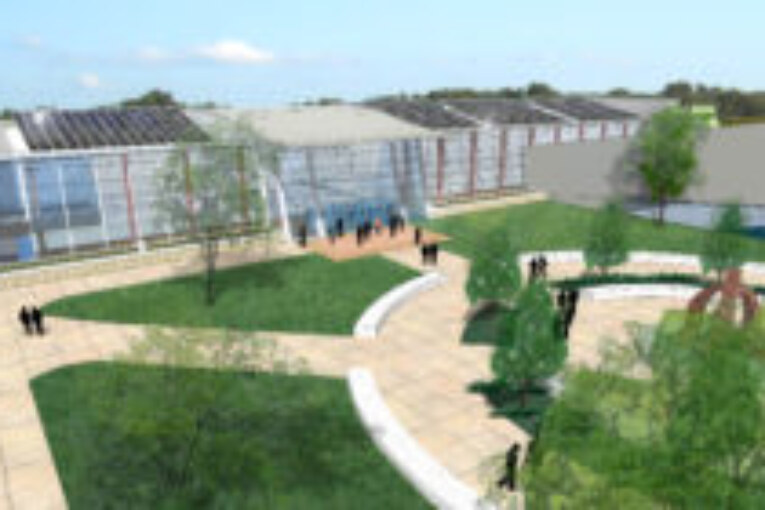
INTRODUCTION
- Sustainable or “green building” design and construction is the opportunity to use our resources more efficiently, while creating healthier and more energy-efficient homes. Although there is no magic formula, success comes in the form of leaving a lighter footprint on the environment through conservation of resources, while at the same time balancing energy-efficient, cost-effective, low-maintenance products for our construction needs. In other words, green building design involves finding the delicate balance between homebuilding and the sustainable environment. Learn more about reducing globle warming.
- The concept of a green building was developed in the 1970s in response to the energy crisis and people’s growing concerns about the environment.
- A Green Building, also known as a sustainable building, is a structure that is designed, built, renovated, operated, or re-used in an ecological and resource efficient manner.
- Sustainable development is maintaining a delicate balance between the human need to improve lifestyles and feeling of well-being on one hand, and preserving natural resources and ecosystems, on which we & future generations depend.
Objectives of a green building
- Protecting occupant health
- Improving employee productivity
- Using energy, water and other resources more efficiently
- Reducing overall impact to the environment
- Optimal environmental and economic performance
- Satisfying and quality indoor spaces
Considerations of a green building
- Control erosion to reduce negative impacts on water and air quality
- Reduce pollution and land development impacts from automobile use
- Limit disruption of natural water hydrology by reducing impervious cover, increasing on-site infiltration and managing storm water run-off
- Encourage and recognize increasing levels of self supply through renewable technologies to reduce environmental impacts associated with fossil fuel energy use
- Provide a high level of individual occupant control of ventilation and lighting systems to support good health, better productivity and a comfortable atmosphere
- Provide a connection between indoor spaces and outdoor environment through the introduction of sunlight and views into the occupied areas of the building.
How to make a building green
- Building design
- Orientation
- Building insulation (walls of AEC block and roof with over deck insulation and roof lawn)
- Window sizing
- Window shading (fixed overhangs)
- Glass selection
- Envelope efficiency measures contributed to 12% savings over base case
- System design
- Energy efficient lighting (CFLs , efficient tube lights and electronic ballasts)
- Daylight sensing (90% lighting energy savings)
- Efficient chillers, Variable air volume systems.
- Wind towers for pre cooling of fresh air.
- Lighting efficiency measures contributed to 15% savings over base case and HVAC efficiency measures contributed 20% savings over base case.
Constitutes a green building
A: Sustainable Site:
- Appropriate site selection.
- Effective use of nature.
- Soil erosion control.
B: Water use efficiency:
- Capture storm water from impervious areas of the building for ground water re-charge or reuse.
- Do not use potable water for landscape irrigation. Use recycled water/storm water.
- Install moisture denser on plants for water conservation.
- Use recycled water for toilet flushing.
- Use ultra high efficiency water fittings and controls.
- Monitor water consumption through on-line controls.
C: Energy efficient and eco-friendly equipment:
- Design orientation of the building to get maximum day-lighting.
- Use green wall and green roof to avoid heat gain into the building.
- Adopt spectrally natural glass materials such that it reduces heat gain, minimize lighting of landscape features.
- Use of energy efficient goods
- Use zero CFC base refrigerants in refrigeration and air-conditioning system.
- Use of renewable energy to reduce environmental impacts associated with fossil fuel energy use.
- Establish Baseline data for energy consumption
D: Eco-friendly building materials and resources:
- Recyclable and Salvage materials.
- Material from local sources mitigating / reducing environmental impact.
- Impact of manufacturing and transportation.
- Salvage controls.
- Material pollutant management
- Health Hazard management of workers on site.
- Material storage methodologies.
- Waste management
- Distribution channels for air intake movement and exhaust
- Climate and pollution monitoring systems.
- Elimination of chemically toxic materials and devices.
- Maintenance of optimum temperature and humidity.
F: Energy system management:
- 30% to 40% saving in operation costs.
- Alternative energy system design
- Optimization of Conventional Energy.
- Building management, control and monitoring systems.


